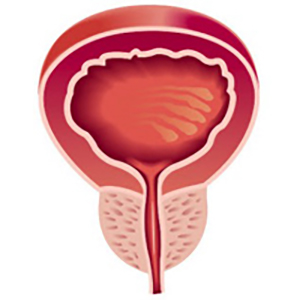Accuracy of PET-choline in nodal staging of localized very high-risk prostate cancer

Accepted: October 30, 2022
All claims expressed in this article are solely those of the authors and do not necessarily represent those of their affiliated organizations, or those of the publisher, the editors and the reviewers. Any product that may be evaluated in this article or claim that may be made by its manufacturer is not guaranteed or endorsed by the publisher.
Authors
Objectives: Localized very high-risk prostate cancer (VHR PCa) has long suffered from the inex-istence of good lymph node staging methods other than invasive surgery, as computed tomogra-phy has low sensitivity for nodal disease. With the rising use of positron emission tomography (PET), it is clinically meaningful to know its value for these patients. Our goal was to evaluate the real-life diagnostic accuracy of PET Choline in nodal staging, comparing it with the gold standard of extended pelvic lymph node dissection (ePLND).
Materials and methods: We reviewed data from a high-volume center, including patients with VHR PCa according to current NCCN guidelines who underwent community 18F-fluorocholine PET/CT; followed by ro-botic assisted laparoscopic prostatectomy (RALP) and ePLND between 2010 and 2021.
Results: We included 44 patients and 88 lymph node regions. Among those, 14/44 (31.8%) patients and 20/88 (22.7%) regions had nodal disease present on definitive pathology. In comparison with ePLND, we found a sensitivity of 64.3% (95% CI, 39.2-89.4%), specificity of 83.3% (95% CI, 70.0- 96.7%), PPV of 64.3% (95% CI, 39.2-89.4%), and NPV of 83.3% (95% CI, 70.0-96.7%) for nodal disease on a patient-based analysis; and sensitivity of 35.0% (95% CI, 14.1-60.0%), specificity of 88.2% (95% CI, 80.6-95.9%), PPV of 46.7% (95% CI, 21.4-71.9%), and NPV of 82.2% (95% CI, 73.4-91.0%) on a region-based analysis.
Conclusions: In our view 18F-fluorocholine PET/CT doesn’t meet the criteria to be a standard exam for pre-operative staging for patients with VHR PCa, mostly due to its low sensitivity. However, other radiotracers should continue to be investigated in this setting.
How to Cite

This work is licensed under a Creative Commons Attribution-NonCommercial 4.0 International License.
PAGEPress has chosen to apply the Creative Commons Attribution NonCommercial 4.0 International License (CC BY-NC 4.0) to all manuscripts to be published.

 https://doi.org/10.4081/aiua.2022.4.401
https://doi.org/10.4081/aiua.2022.4.401



